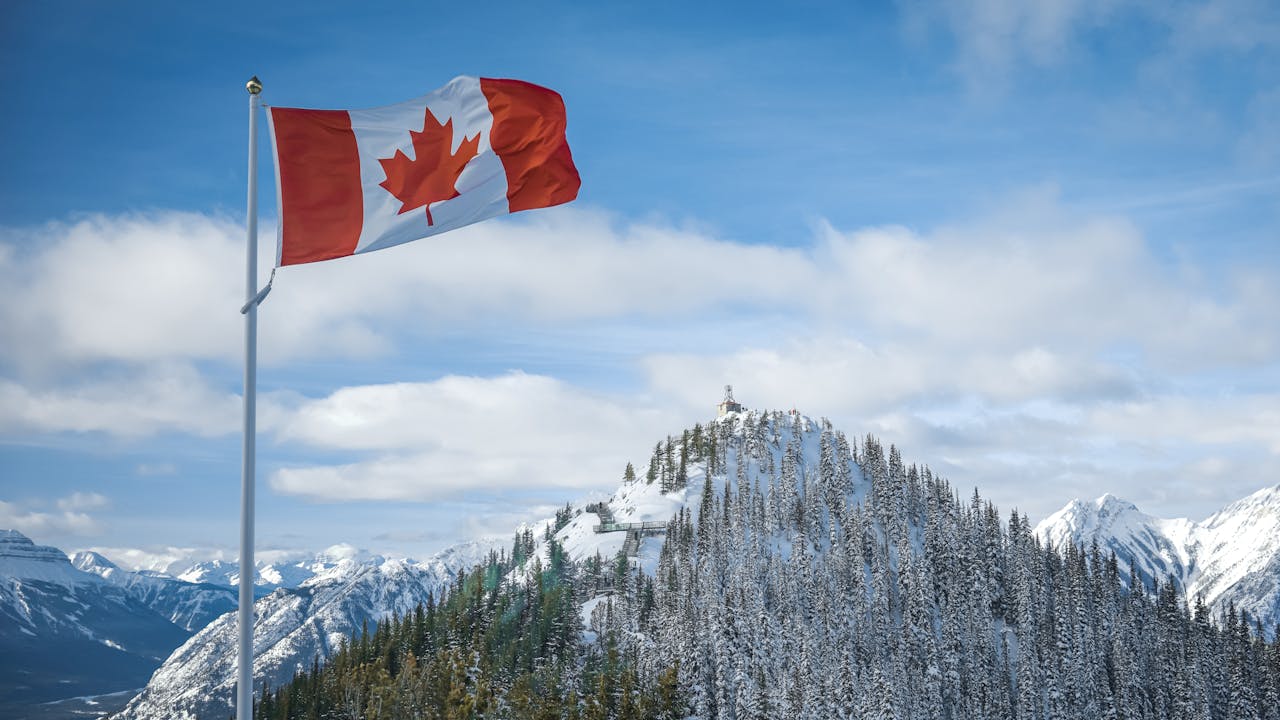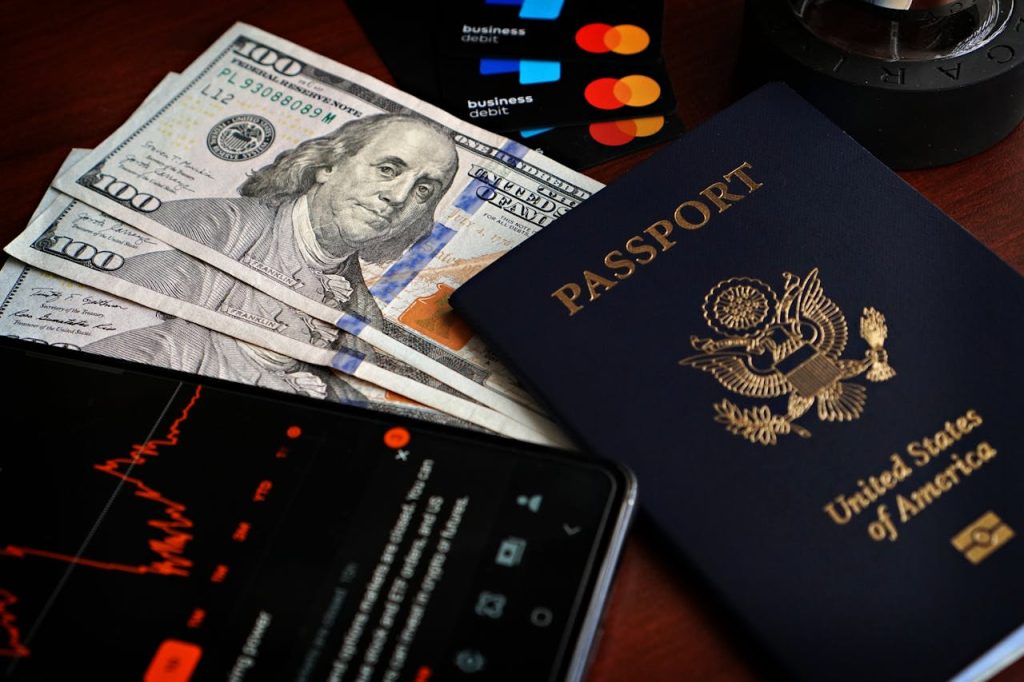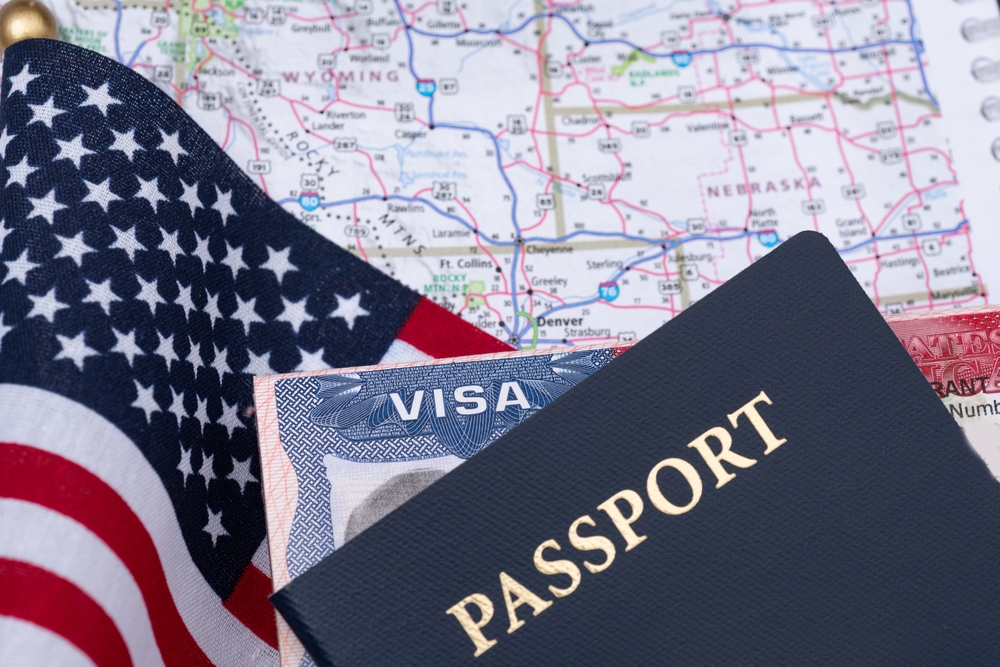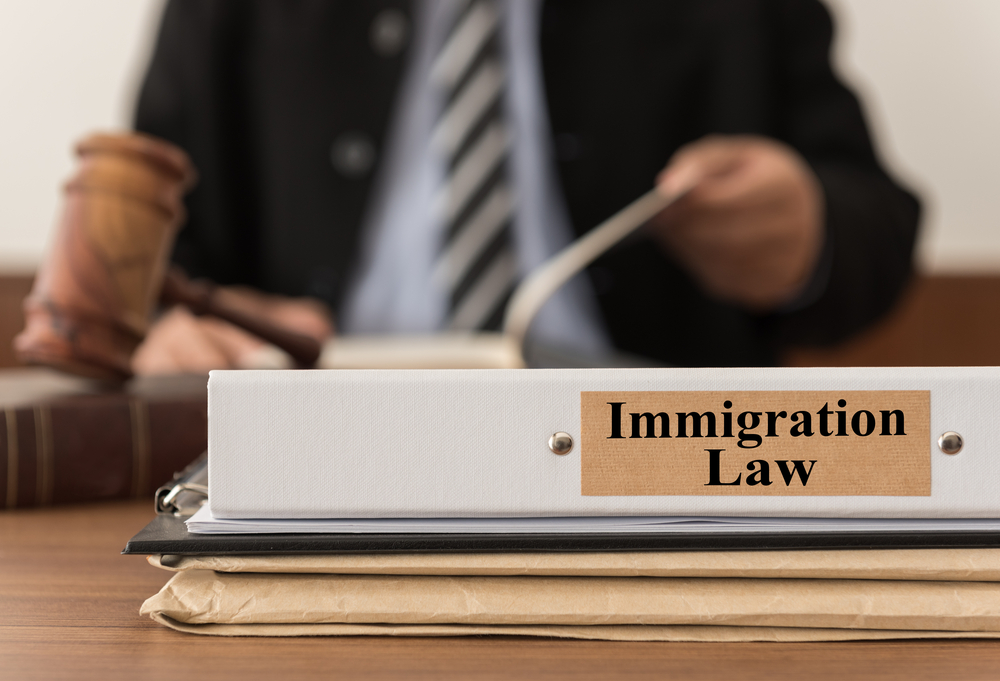Your cart is currently empty!
More Americans applying for refugee status in Canada, data shows

For generations, the United States has been viewed as a destination for those fleeing persecution, a country synonymous with safety and opportunity. Yet a growing number of Americans are now crossing into Canada and asking for refugee protection themselves, a reversal that speaks volumes about shifting realities south of the border. In the first half of 2025, more U.S. citizens applied for asylum in Canada than in any full year since 2019, with many citing fears tied to the erosion of protections for transgender and LGBTQ individuals. While the numbers remain small in proportion, the trend carries weight far beyond statistics. It reflects a profound sense of insecurity among some Americans and forces Canada to grapple with refugee claims from a country it has long considered safe.
This development is more than a bureaucratic anomaly—it is a story about rights, identity, and the fragile line between belonging and exclusion. It reveals how political decisions and cultural battles within one nation can ripple outward, reshaping migration patterns and challenging assumptions about where safety can be found. For the individuals making these claims, it is a matter of survival. For the societies on both sides of the border, it is a moment that demands reflection on what safety means, who gets to claim it, and how quickly it can be lost.

Rising Refugee Claims from the United States
Canada is seeing a striking and unexpected rise in refugee applications from American citizens, a development that signals deeper tensions within the United States itself. In the first half of 2025 alone, more Americans applied for refugee status in Canada than in all of 2024, marking the highest level recorded since 2019. According to figures from Canada’s Immigration and Refugee Board, 245 claims were filed by U.S. nationals between January and June, out of a total of roughly 55,000 applications. That number may seem small in proportion, but the trajectory is what stands out. For decades, the United States has been perceived globally as a safe haven, a destination for those fleeing persecution elsewhere. The idea that U.S. citizens are now seeking protection in Canada reverses that narrative, challenging assumptions about stability, safety, and rights within one of the world’s wealthiest democracies.
This pattern is not without precedent. During Donald Trump’s first administration, Canada recorded a similar uptick in asylum applications from Americans, particularly among those who felt marginalized by his policies. That trend has returned with even greater force as the political climate in the U.S. grows more polarized and social protections for vulnerable groups are rolled back. Lawyers who work with refugee claimants have reported an increasing number of inquiries from transgender Americans who no longer believe they can live securely in their home communities. These claims are not merely about abstract political disagreements. They are grounded in urgent fears over access to gender-affirming healthcare, protection from discrimination, and even basic physical safety in public spaces. For many who cross into Canada to file these applications, asylum represents not a political statement but a lifeline—a chance to live openly and without fear in a country where their rights are more likely to be protected.
Yet seeking asylum in Canada is far from straightforward. To succeed, applicants must persuade the Immigration and Refugee Board that nowhere in the United States offers them safety, an exceptionally high standard considering the size and diversity of the country. The Board has historically granted only a small fraction of claims from Americans, underscoring just how difficult this path is. Still, the willingness of hundreds of U.S. citizens to attempt it reveals the depth of their anxiety. It also highlights the extraordinary moment we are in: a time when the promise of security and freedom that the United States once symbolized is, for some of its own citizens, no longer enough.

The Legal and Policy Framework
The rise in American refugee claims to Canada cannot be understood without considering the legal structures that govern asylum applications across the border. Central to this is the Safe Third Country Agreement, a bilateral pact between the United States and Canada that stipulates asylum-seekers must file for refugee protection in the first “safe” country they enter. For most migrants, this agreement blocks claims filed at Canada’s land border if they arrived from the United States. Yet Americans themselves are exempt from this rule, since they are not considered third-country arrivals. This exemption explains why U.S. citizens can make claims directly in Canada, even though their acceptance rates remain exceptionally low compared to claimants from conflict-ridden nations.
The bar for proving refugee status as an American is daunting. Canada’s Immigration and Refugee Board requires claimants to demonstrate that no safe place exists anywhere in the United States where they could reasonably live. This is a profound hurdle given the size of the U.S., its patchwork of state laws, and its established—if uneven—system of legal protections. The practical effect is that while claims can be filed, few succeed. Data shows that Canada has historically granted refugee status to only a small number of U.S. citizens, reflecting a belief that the United States, despite its political and social tensions, remains fundamentally secure. For those who do win, the process involves compiling meticulous evidence of systemic persecution, supported by testimony, documentation, and in some cases expert reports.
Recent developments have altered the landscape in subtle but important ways. Canada’s refugee board has begun adding reports from organizations such as Human Rights Watch into its documentation packages, specifically addressing the treatment of LGBTQ people in the United States. This inclusion reflects recognition that social and legal conditions south of the border have shifted in ways that could impact asylum claims. It also indicates that while Canada’s door remains difficult to push open, it is not entirely closed. These changes in institutional documentation may not guarantee success for claimants, but they give lawyers more material to argue that certain groups face legitimate, systemic risk in the United States, and that their fears are not isolated anecdotes but part of a broader pattern.

The Human Impact and Stories of Flight
Behind the statistics and legal discussions are the individuals whose lives are caught in the middle of shifting political and cultural currents. Reports from refugee lawyers suggest that many of the recent claimants are transgender Americans, often coming from conservative states where gender-affirming healthcare has been restricted or outlawed. For these individuals, the prospect of remaining in the U.S. has become untenable, with laws and court decisions closing off avenues for medical care, public participation, and even safety in everyday life. The decision to leave one’s country of birth is never taken lightly, but in these cases, it reflects an acute sense of vulnerability and fear that transcends politics.
One trans woman from Arizona, for example, crossed into Canada earlier this year to file a refugee claim, convinced that her ability to live authentically and safely had been stripped away. Another case involves a mother who arrived in Canada to seek asylum on behalf of her young transgender daughter, motivated by fears about the child’s access to necessary healthcare and protection from harassment. These stories underscore the deeply personal stakes involved: refugee applications are not abstract exercises in international law but acts of desperation from people who feel their very existence is under threat. Their experiences highlight the emotional toll of navigating both the bureaucracy of asylum and the trauma of displacement.
These personal narratives also illustrate the unique challenge of proving a refugee case as an American. Unlike individuals fleeing war zones or authoritarian regimes, American claimants must show that their persecution is systemic, unavoidable, and unaddressed by legal recourse at home. For trans individuals, the argument often rests on the spread of legislation across multiple states that bans or limits gender-affirming care, alongside federal-level rollbacks of LGBTQ protections. To succeed, their cases must demonstrate that relocating within the U.S. does not resolve the danger, a burden of proof that is especially difficult given the variation in state laws. Yet the persistence of claimants suggests that the conditions they face feel not just difficult, but impossible to survive.

The Broader Political Climate in the United States
The rise in refugee applications from Americans is inseparable from the broader political climate in the United States. Over the past decade, cultural battles around gender identity, sexuality, and personal freedoms have intensified, often spilling into legislation and court rulings that directly affect marginalized groups. The Trump administration’s first term saw significant rollbacks in protections for transgender people, from restrictions on military service to challenges around access to public facilities. Those changes have accelerated in recent years, with the Supreme Court and various state legislatures enacting measures that limit or entirely block access to healthcare, sports participation, and even the right to exist in public spaces for trans individuals.
These shifts are not isolated to policy alone but are embedded within a climate of heightened polarization. Public debates on gender and sexuality have often been weaponized in political discourse, making LGBTQ rights a flashpoint in broader ideological battles. For many trans people, this translates into lived insecurity—not only legal exclusion but also heightened vulnerability to harassment and violence. The perception that protections are eroding at both the federal and state levels feeds a sense that the United States no longer offers reliable refuge, even to its own citizens. In this context, crossing into Canada becomes more than a legal maneuver; it becomes a search for a political and cultural environment where identity is less likely to be criminalized or politicized.
For Canada, these dynamics create a delicate balancing act. On one hand, officials must uphold the integrity of the refugee system, ensuring that it remains focused on individuals facing genuine persecution. On the other, they cannot ignore the evidence that certain groups in the United States are experiencing escalating hostility that may, in some cases, rise to the level of persecution. The increase in claims from Americans forces Canada to navigate a complicated diplomatic line, treating its closest ally as a potential source of refugees without destabilizing broader bilateral relations. It is a reminder that the definition of “safe country” is not static but subject to political and cultural shifts.
The Global Significance of the Trend
While the raw numbers of American refugee claimants in Canada are relatively small, the symbolism carries global weight. The United States has long presented itself as a beacon for those fleeing repression, and yet its own citizens now find themselves seeking refuge abroad. This reversal does not go unnoticed internationally, as it raises questions about the strength of democratic institutions and the durability of rights in a country often held up as a standard-bearer. When Americans apply for asylum in Canada, it underscores that the erosion of rights is not merely a concern for far-off authoritarian regimes but a reality that can unfold within democracies as well.
The phenomenon also feeds into broader debates about the resilience of liberal democracies under the strain of polarization and populist politics. If a subset of Americans can convincingly argue that their country is unsafe for them, it challenges assumptions about the universality of U.S. freedoms. Moreover, it signals to the international community that even powerful nations are not immune to regressive shifts that endanger vulnerable populations. For Canada, this trend places its refugee system under a global spotlight, testing its ability to remain both principled and pragmatic in the face of politically sensitive claims.
On a human level, the trend adds nuance to how we understand migration itself. Refugee flows are often discussed in terms of global South-to-North dynamics, or as a function of war, famine, and dictatorship. Yet the movement of Americans northward complicates these narratives, showing that migration can also stem from cultural and legal shifts in societies that outwardly appear secure. It suggests that the drivers of displacement are expanding, no longer limited to the most extreme crises but including the slow erosion of rights and protections that make life unlivable for particular groups.
Widening Exodus: More Americans Looking Beyond Borders
Embarking on asylum in Canada captures just a sliver of a broader exodus trend among Americans. Across the Atlantic, newspapers and relocation firms are tracking a rising tide of U.S. citizens exploring permanent lives abroad. In the wake of Donald Trump’s return to the presidency, many—particularly from marginalized communities—say they no longer feel safe or seen in their homeland. Doris Davis and Susie Bartlett, a same-sex couple from New York, publicly shared their plan to relocate to Portugal or Spain, citing growing threats to racial equity and LGBTQ+ rights. They told Reuters, “We love this country, but we don’t love what it has become,” capturing a sentiment echoed across headlines and expat communities.
It’s not only ideologically driven departures drawing attention. Surveys reveal a deeper search for livability and personal fulfillment. A Talker Research poll showed that 17% of Americans expressed a desire to move abroad within five years, with Canada topping the destination list for its trusted healthcare, balanced work-life culture, and safety—especially appealing to millennials and residents of the Midwest. Seventy percent of those surveyed said they believed U.S. society had become toxic; 65% worried about its direction.
Retirees add another dimension to this movement. Faced with soaring costs for healthcare and modest retirement income, many older Americans find better financial comfort in countries like Spain, Costa Rica, and Ecuador. Stories like that of Amy Glenn—a former teacher from Texas who retired in Costa Rica because her $1,200 monthly Social Security check didn’t stretch far enough—are not isolated. These retirees reported reductions in daily expenses and more relaxed lifestyles abroad, away from both political stress and high living costs at home.
Academia and advanced sectors are also feeling a tremor. An alarming 75% of U.S. scientists surveyed in March 2025 are considering leaving, driven by federal budget cuts and mounting policy instability. Recognizing the warning signs, Europe has responded: the European Union recently pledged around €500 million (roughly $556 million) over two years to attract U.S. researchers seeking stable funding and academic freedom.en.wikipedia.org
Though each of these motivations—exile for safety, search for quality of life, economic pragmatism, or professional refuge—follows its own logic, collectively they speak to a growing disillusionment with the American promise. Whether through asylum claims in Canada or plans to retire, study, or build a life abroad, Americans are quietly testing the durability of their own nation’s appeals. It reframes the “safe country” question: maybe safety isn’t just elsewhere for some—it’s a concept that’s being re-evaluated, right at home.
